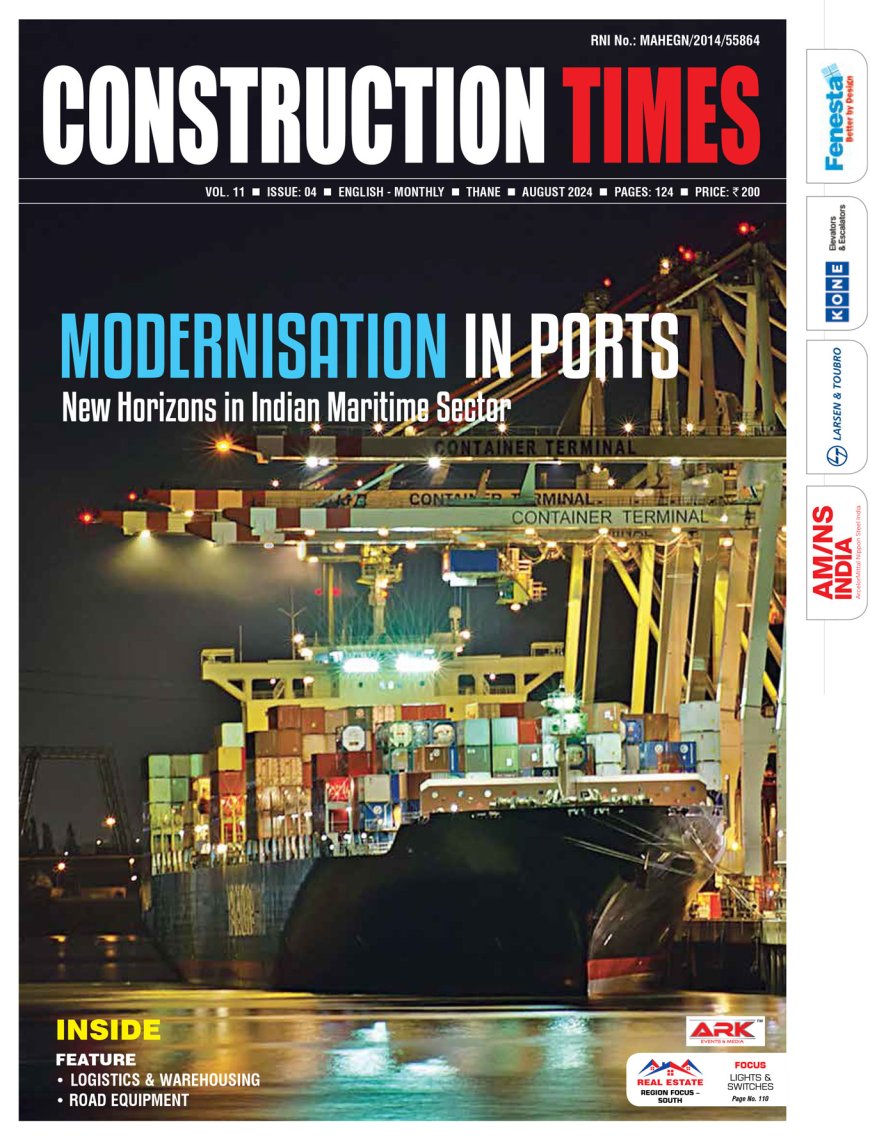Private ports and terminals play a major role in taking the country towards Maritime India Vision 2030.

Devki Nandan,
President, IPPTA and Senior Executive Vice President and Head (Business Development and M&A), JSW Infrastructure
How do you view the performance of Indian ports? How are you experiencing the progress this year?
Since the privatization of Indian ports in 1997, their performance has significantly improved, reaching international standards. Port capacities have expanded to meet increasing trade demands. Enhanced road and rail connectivity through the PM Gati Shakti National Master Plan and public-private partnerships have boosted India's maritime competitiveness. India’s rank in the World Bank Logistics Performance Index (LPI) for International Shipments improved from 44th in 2014 to 22nd in 2023. Government policy reforms and new technologies have increased port efficiency and productivity, with continued progress in 2023 through the development of new port terminals.
What is your overview of Indian ports improving their performance on a global level?
Nine Indian ports are now in the global top 100 rankings in the Container Port Performance Index (CPPI) by the World Bank and S&P Global Market Intelligence, reflecting their resilience, efficiency, and overall performance. These improvements in operational efficiency bode well for the future growth of the Indian port sector. Going forward, we see investment in infrastructure and new technology in ports, which will further improve efficiency in operations.
How is containerization growing at Indian ports and maritime trade? What are the current challenges in container handling?
Containerization, crucial for reducing logistics costs and improving quality, has transformed India’s transport industry. Current container traffic is around 22 million TEUs. containerization rates are about 70% in developed countries, India is below 40%, indicating significant potential for growth. In the last five years containerization has grown at a CAGR of 5.3% despite dip in volumes during Covid-19 (Source: World Bank data and CEIC data), the same is expected to grow at a CAGR of high single digits in the next five years.
What is the contribution of private ports in India’s maritime business?
The private ports and private port terminals play a major role in taking the country towards Maritime India Vision 2030. They brought in substantial investment and state of the art technology to Indian port sector. Their performance is comparable to the international standards. Private sector is handling 52% of major ports traffic, although they operate only 28% of the overall port capacities.
What are the challenges and opportunities for private ports in India?
We congratulate the Ministry of Ports, Shipping and Waterways for initiating a number of steps for promotion of infrastructure in maritime sector in the country. The Maritime India Vision 2030 (MIV 2030) and Maritime Amrit Kal Vision 2047 aim at implementing the Landlord Port model in major ports whereby the Port Authorities will be carrying out the regulatory functions, while most of the operating facilities will be handed over to private players. MIV 2030 envisions an overall investment of Rs 3,00,000-350,000 crores across ports, shipping, and inland waterways. India’s port sector needs to double its capacity by the year 2030.
In order to attract private sector participation in a big way, it is essential that a proper investment environment is created to facilitate this. Removal of existing GST benefits at the construction stage, removal of SEIS benefits, modification of EPCG scheme etc, for the port sector has dampened the interest of these players. The port infrastructure sector is highly capital intensive and has long gestation periods with high risks involved. I request the government to provide a conducive environment, to encourage private sector investment in PPP projects and increase the socio-economic benefits of such investments.
Some PPP projects in the port sector were adversely affected by regulatory framework inadequacies. While the government has rectified some of these inefficiencies like giving market-based tariff freedom etc, these were brought into effect prospectively, thus leaving the existing concessionaires in the dark. I request the government to bring in a policy on urgent basis to migrate existing terminals to market-based tariff. There are many operational issues pertaining to Railways in terms of capacity of railway lines and availability of rakes. It is essential to deal with these issues for ensuring the long-term sustainability of PPPs.
Many port infrastructure investments generate cash flows only after some years and the initial phase of an infrastructure project is subject to high risks with huge upfront costs and huge gestation periods. In addition, the uniqueness of infrastructure projects in terms of the services they provide makes infrastructure investments less liquid. These three elements – the time profile of cash flows, high initial risks and illiquidity – make purely private investment difficult and costly. It is therefore essential to develop an institutional mechanism for providing liberalised long-term lending to the port infrastructure sector. Government has proposed setting up of a Maritime Development Fund for this purpose. But so far this has not taken concrete shape. I hope that this facility will be functional soon.
Many terminals at Major ports were bidded between 2000-2005. These terminals would be coming up for re-bidding on the expiry of 30 years. I request the government to bring a policy of ROFR to the existing concessionaire as the existing concessionaire would have established a viable marketing network with shipping lines to achieve optimum utilisation of the facility and any disruption may result in underutilisation of capacities. Such policy would also lead to additional investments in these terminals, thereby improving operational efficiency over the concession period.















